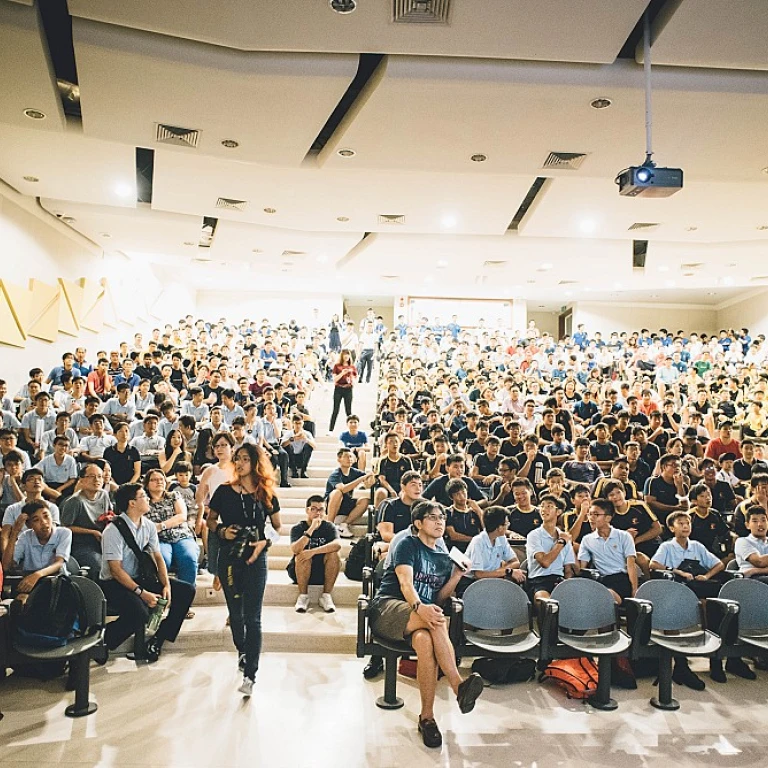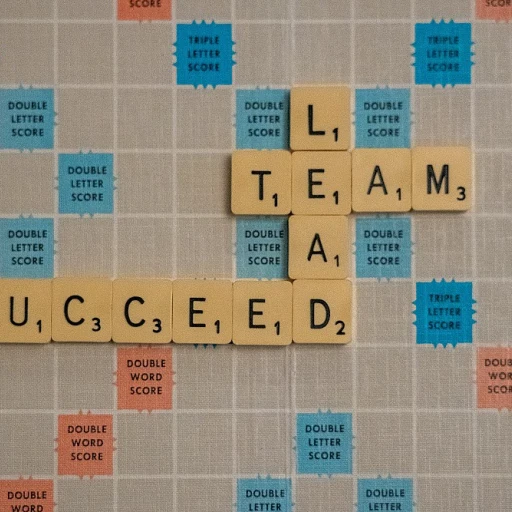
Understanding Connected Recognition
Unveiling the Power of Connection in Recognition
In today’s competitive workplace landscape, companies strive to foster environments where every employee feels valued and inspired. The concept of connected recognition emerges as a pivotal tool in this pursuit. But what exactly does it mean? In essence, connected recognition is about cultivating meaningful appreciation within a company culture, where employees are not just acknowledged by their leaders but also by their peers. This approach transforms an ordinary recognition program into a vibrant, interactive platform that enhances employee engagement. Connected recognition can seamlessly integrate with traditional recognition programs, offering a more holistic appreciation of team members' efforts. The organizational culture that embraces this concept often leads to improved employee satisfaction and productivity. As part of the broader company values, it instills a culture of appreciation that goes beyond typical rewards like gift cards, creating a deeper connection between employees and the organization. A recognition platform designed with connectivity in mind empowers employees to give and receive recognition efficiently. It’s not limited to acknowledging hard work only from the leadership's perspective. Instead, it fosters an environment where peer recognition flourishes, reinforcing the bond between coworkers. When employees feel recognized by their colleagues, it brings about an enhanced sense of belonging which is crucial for effective employee engagement. For companies looking to enrich their workplace culture, understanding the intricacies of connected recognition is vital. As a part of this journey, it’s also important to consider the insights provided by effective 360-degree feedback questions, as these can play a significant role in evaluating and strengthening your recognition strategies. Furthermore, the real value of a connected recognition system echoes beyond individual rewards—it cultivates a collective leadership that drives a company toward success, bringing its people closer and nurturing a unified team spirit.The Role of Technology in Connected Recognition
The Intersection of Technology and Recognition Programs
In recent years, technology has revolutionized how companies approach employee recognition and appreciation. The advent of digital tools and platforms has made it possible for companies to create connected recognition programs that transcend traditional methods. Leveraging technology enables organizations to build a cohesive company culture where acknowledgment becomes an integral part of the workplace.
At the heart of effective employee programs lies the capability to foster peer recognition. A technology-driven platform allows employees to visibly recognize their team members' hard work, aligning with the company's values and enhancing employee engagement. Employees receive timely, tangible rewards, such as gift cards, which reinforce the positive behavior recognized by their peers and leaders alike.
Leadership plays a crucial role in promoting a connected recognition platform. By integrating technology into their recognition practices, leaders can more easily highlight and reward achievements, making employees feel valued and appreciated. This continuous loop of recognition and reward helps build a motivated team and promotes a culture of appreciation across the organization.
Companies like Cisco have shown how a well-executed recognition program, supported by technology, can significantly improve workplace dynamics. When employees know their efforts are seen and rewarded, it encourages an environment of trust and collaboration.
To build a sustainable recognition program, organizations can explore crafting effective employee goals that seamlessly align with tech-enhanced recognition practices. This strategic alignment ensures that both the platform and the program can evolve with the company's needs, fostering enduring employee engagement and retention.
Benefits of Connected Recognition for Organizations
Boosting Workplace Vibes with Connected Recognition
In today's fast-paced work environment, organizations are continuously seeking methods to enhance employee engagement and ensure a thriving company culture. One effective way to achieve this is through a robust connected recognition program. Recognition programs are popular for their ability to acknowledge the hard work and dedication of employees, fostering an atmosphere where employees feel truly appreciated. A strong recognition platform is not just an add-on; it's a vital component of company culture. When employees receive recognition from team members and leadership alike, it reinforces company values and motivates them to maintain their performance. Peer recognition, in particular, boosts morale by creating a cohesive team spirit, where appreciation flows organically between colleagues. The benefits of implementing connected recognition in the workplace are manifold:- Enhanced Employee Engagement: By recognizing and appreciating employees' efforts, companies can significantly increase engagement levels. Employees feel more connected to the organization when their contributions are acknowledged, leading to greater job satisfaction and productivity.
- Improved Employee Retention: Recognition programs can act as a retention tool, reducing turnover rates. When employees feel valued, they are less likely to seek opportunities elsewhere.
- Strengthened Leadership Bonds: Engaging leaders in the recognition process helps cultivate a supportive work environment. Leaders who actively participate in recognition programs can inspire their teams and exemplify company culture values.
- Fostering a Positive Company Culture: A well-integrated recognition program contributes to the development of a positive and inclusive workplace culture. It's about creating a sense of belonging where people feel encouraged and motivated.
- Boosting Performance and Productivity: Rewarding employees for their achievements can lead to increased performance levels. Recognition programs, whether through rewards like gift cards or simple appreciation messages, encourage employees to excel in their roles.
Implementing Connected Recognition in HRIS
Implementation Within HRIS Frameworks
Transitioning to a connected recognition system requires a strategic approach. An effective recognition program can be integrated into your company's existing Human Resources Information System (HRIS) to foster a culture of appreciation and enhance employee engagement.
Leadership plays a crucial role in embedding a recognition culture into your workplace. Providing tools that allow seamless peer recognition ensures that employees feel valued and their efforts acknowledged. By leveraging technology within your HRIS, you can streamline recognition processes and track performance metrics effectively.
Recognition platforms integrated into HRIS can also offer rewards such as gift cards, further encouraging participation. The communication of company values through connected recognition programs allows team members to align with organizational goals, promoting a company culture of ongoing employee appreciation.
Successful implementation requires HR and management teams to ensure the system is user-friendly. Training should be provided to employees to maximize adoption. Regular feedback loops can help refine the approach and clarify expectations, making room for continuous improvement and meaningful engagement.
Challenges and Solutions in Connected Recognition
Addressing Challenges and Finding Solutions
In the realm of connected recognition, organizations might face several challenges when integrating this concept into their human resources information system (HRIS). It's essential to tackle these issues effectively to ensure a smooth transition and maximize employee engagement.- Technology Adoption: One of the primary hurdles can be the implementation and adoption of new technology. Employees may resist change, especially if they are accustomed to traditional methods of recognition. To counter this, companies can offer comprehensive training programs and demonstrate the benefits of the recognition platform.
- Engagement Consistency: Maintaining consistent employee engagement can be tough if the recognition program is not universally accepted or if it lacks consistent application by leaders and team members. It is crucial for leadership to lead by example, regularly participating in peer recognition to set the tone for the company culture.
- Alignment with Company Values: Another significant challenge is ensuring that the recognition program aligns with the company's values and culture appreciation. Ensuring that employees receive recognition in a manner that reflects the core values of the company helps in fostering a culture of recognition.
- Rewards and Motivation: Deciding on the nature of rewards can also be tricky. Not all employees are motivated by the same incentives, and what works for one may not work for another. Personalized rewards, such as gift cards, can cater to diverse employee preferences, ensuring that employee appreciation feels sincere and motivating.
- Scalability and Customization: Recognition programs must be scalable and customizable to cater to the needs of diverse teams across different departments. A flexible recognition platform can accommodate team-specific customs while maintaining a cohesive company-wide approach.
Future Trends in Connected Recognition
Embracing the Future of Connected Recognition
The landscape of employee recognition is constantly evolving, and connected recognition is at the forefront of this transformation. As technology continues to advance, companies are finding new ways to enhance their employee engagement strategies by making recognition more integrated and impactful. Here are some trends to watch:- Integration with Emerging Technologies: Technologies like AI and machine learning are becoming pivotal in predicting patterns and delivering personalized recognition experiences. These technologies enable companies to implement recognition programs that are more relevant and timely, which fosters a culture of appreciation.
- Enhanced Mobile Accessibility: As work environments evolve, mobile accessibility is becoming crucial for recognition platforms. Employees can easily give and receive recognition through mobile apps, keeping teams connected and engaged regardless of their location.
- Real-time Feedback and Analytics: The integration of real-time feedback mechanisms within recognition platforms gives leaders the ability to monitor the effectiveness of their recognition programs. This data-driven approach helps organizations refine their strategies and ensure they align with company values.
- Personalized Rewards Systems: Moving forward, companies are likely to embrace more personalized reward options within their employee appreciation programs. Offering diverse rewards like gift cards, experiences, or additional time off can motivate and resonate with employees more effectively.
- Fostering a Self-Sustained Recognition Culture: As peer recognition becomes a staple in the workplace, companies are striving to build an environment where appreciation is a natural occurrence rather than a managerial task. Encouraging team members to recognize each other's hard work reinforces a positive company culture.









